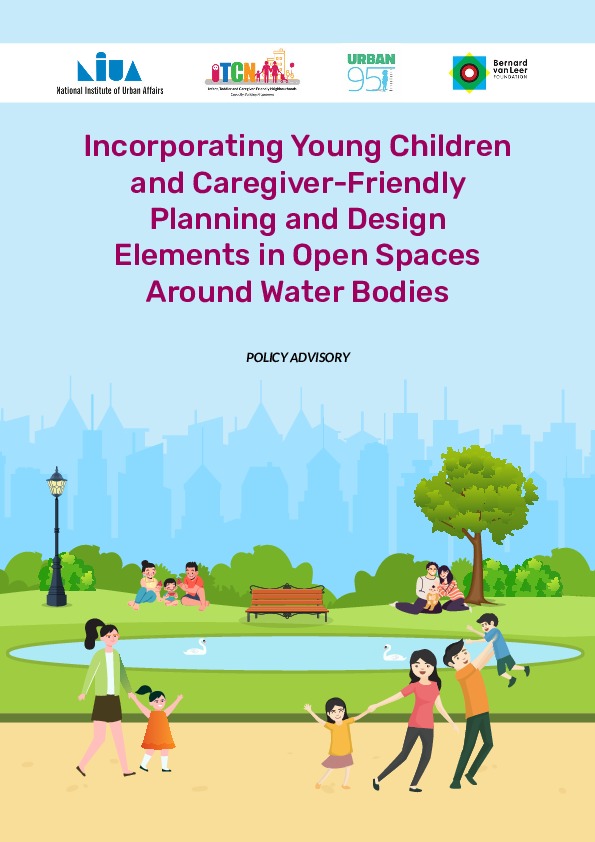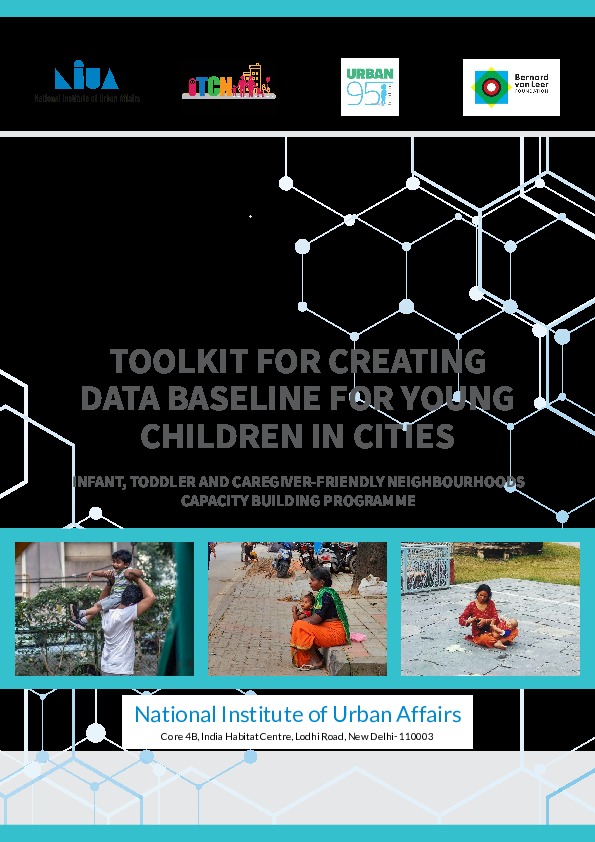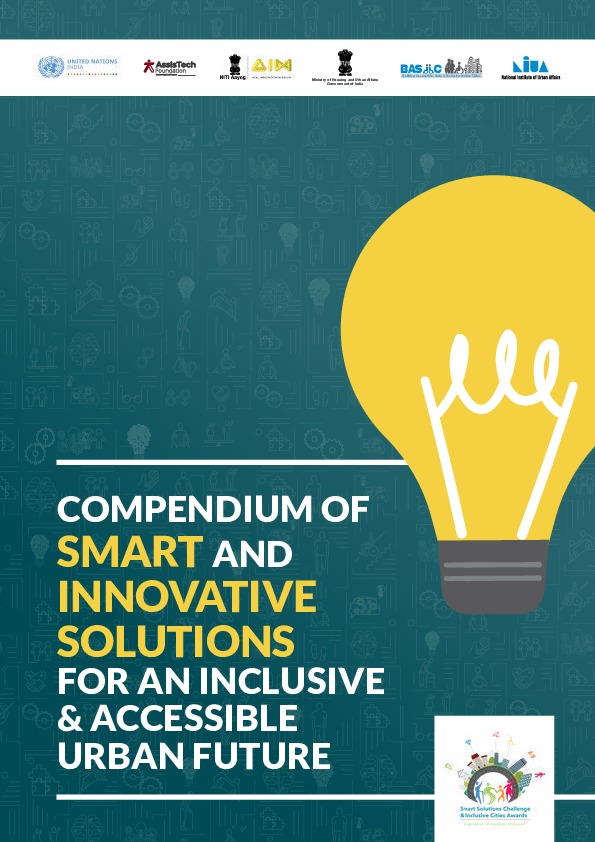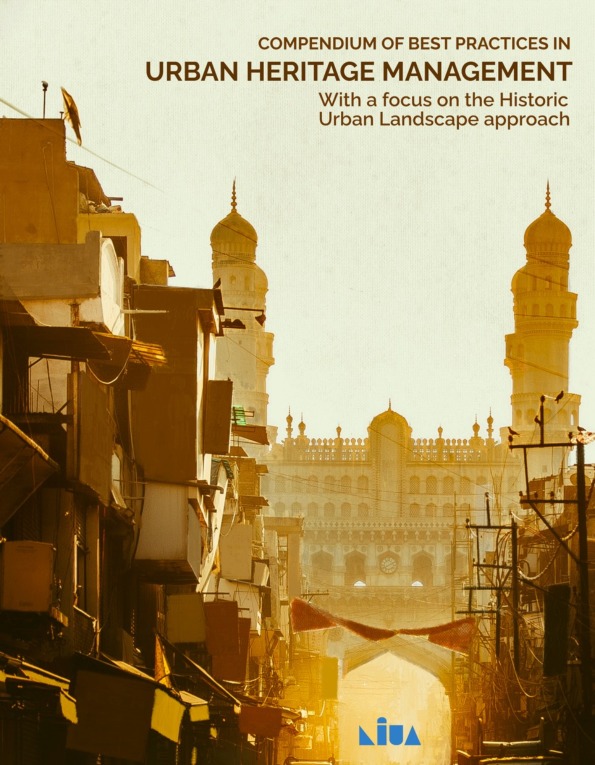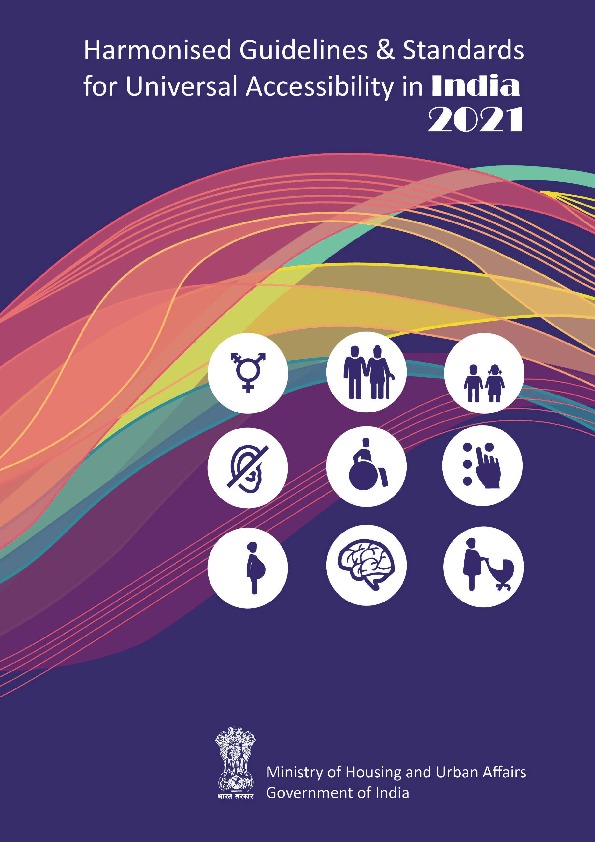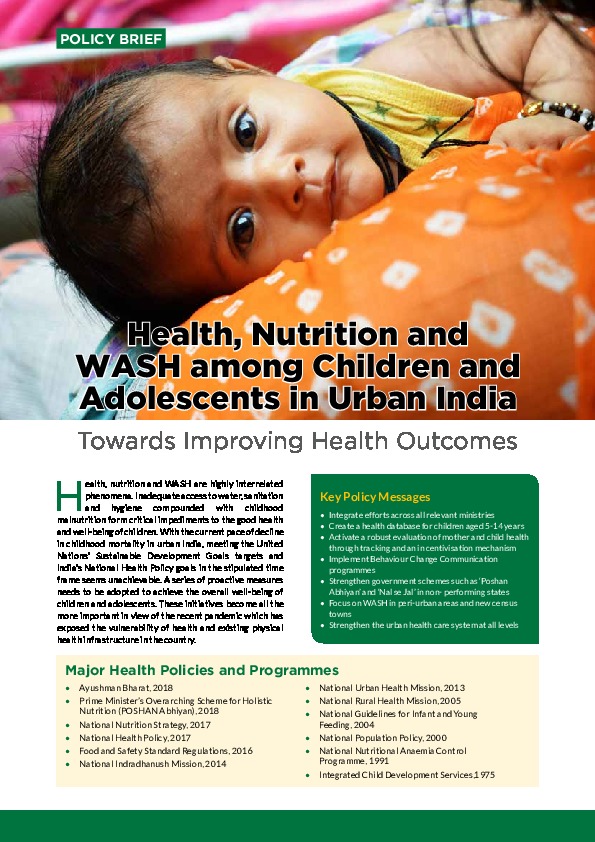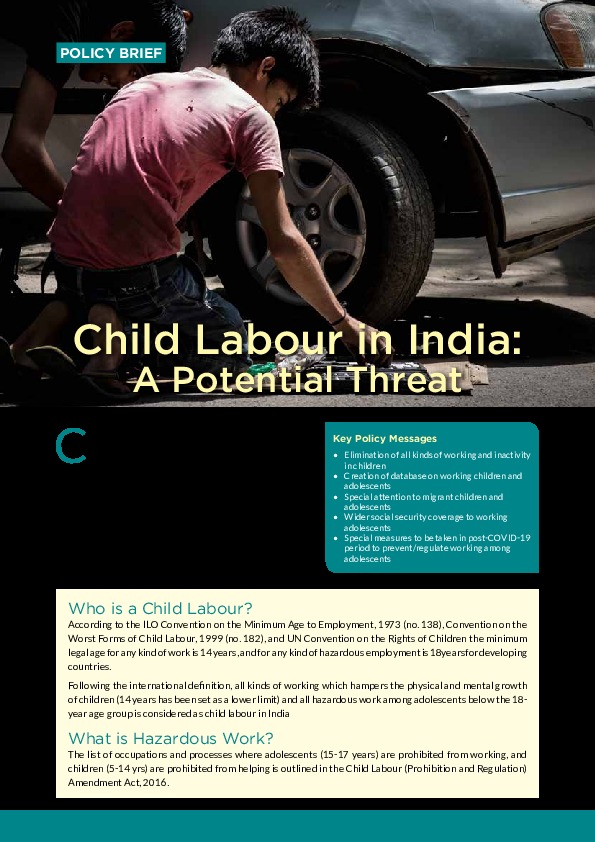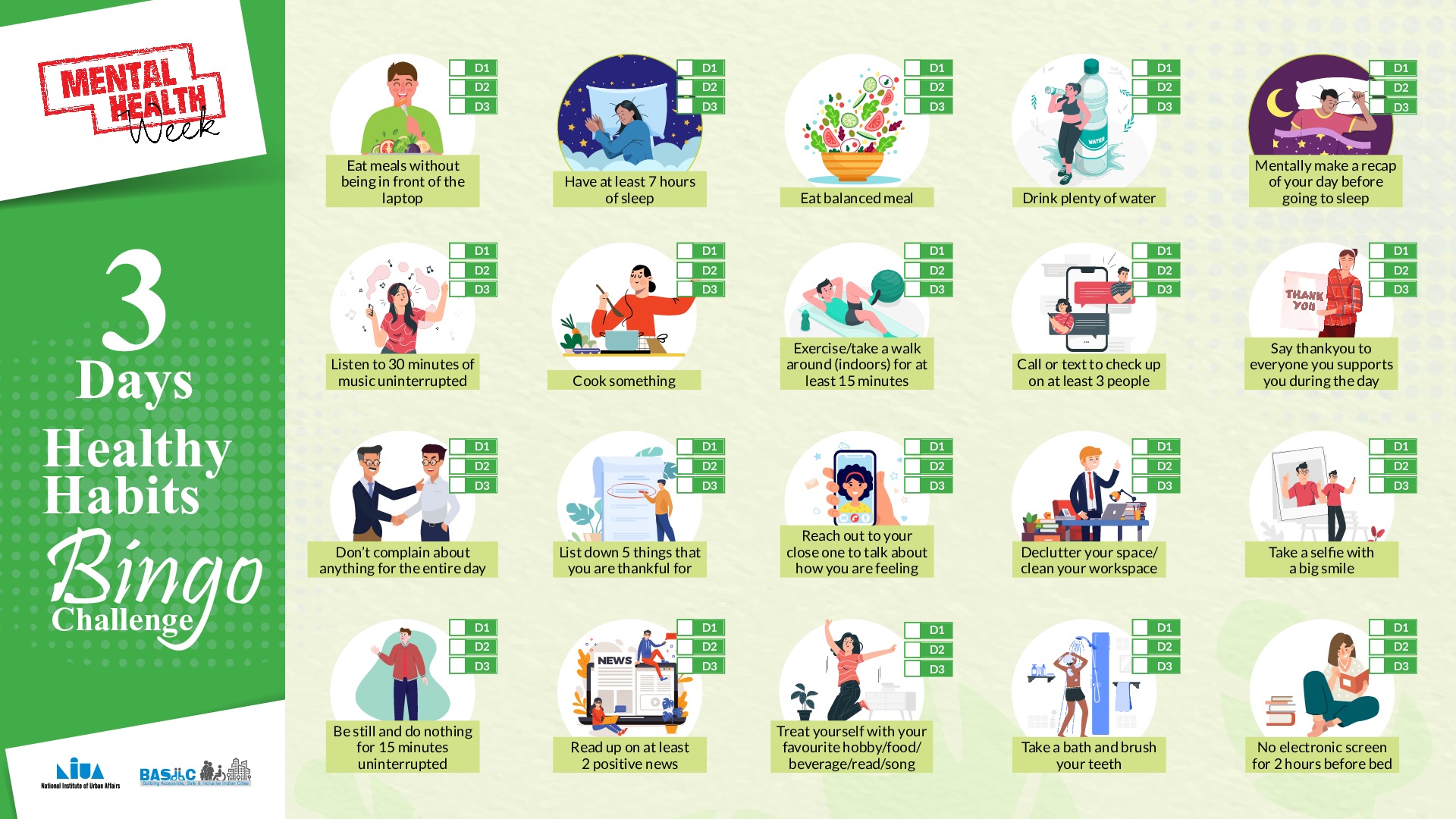Cities are engines of growth providing numerous opportunities for individuals and contributing significantly to the national economy. This acts as the pull factor reflected in the significant increase in urban population, especially in the last two decades. While the total population in India increased by 35%, the urban population grew by 85% during 1991 - 2011. As stated by the Hon Minister of Housing and Urban Affairs,...“India stands at the threshold of a critical ‘moment’ in its developmental trajectory with a need to create adequate opportunities for cities/towns to grow, flourish and become vibrant centres of investment and productivity.” To achieve this, a growth model promoting sustainability based on inclusion, ecological balance, better governance, efficient resource management and a unique identity for communities, cities and regions is essential.The rapid industrialisation and exponential growth of the service sector has led to the high growth of our urban areas putting forth numerous challenges – keeping pace with the demand for housing, infrastructure, and social facilities, and ensuring most productive use of the human resource in cities. Indian cities have, in general, experienced spontaneous growth rather than planned expansion. The cities have been unable to respond adequately to the demands arising from unprecedented in-migration as is reflected in inadequate infrastructure and the uncontrolled growth of informal settlements. With lack of access to affordable formal housing, most of the urban migrants find shelter in slums, unauthorised tenements, and settlements in peri-urban areas. This deprives them access to social facilities and income earning opportunities for various reasons including people’s perceptions and lack of mobility. Census 2011 reported 65.5 million persons living in slums which accounted for 17.4% of its urban population.The economic and housing vulnerabilities of the marginalized segments of urban population has been highlighted in the on-going pandemic-induced crisis. The prolonged national lockdown in 2020 led to shut down of all non-critical establishments and activities. This adversely affected the income flows resulting in economic hardships, particularly for the daily wage earners and informal sector workers. In addition, the high population densities in informal settlements posed the challenge of containing the spread of the contagion. The vulnerabilities of the marginalized groups, most of whom are migrants, forced them to return to their native places resulting in reverse migration from urban centres away from the overcrowded living areas and uncertain employment prospects. The national government has responded to the pandemic and the resultant situation to promote inclusive development in cities as is reflected in the strategies to contain the spread, mitigate the impacts of the lockdown, and rebuild better. It is in the above context that a need has emerged for an aggregated approach to urban development; one that encapsulates the various economic, spatial, digital, and structural concepts and intersects the diversities in the society w.r.t gender, abilities, and age. Under the aegis of the Ministry of Housing and Urban Affairs (MoHUA), the National Institute of Urban Affairs (NIUA) with strategic support from the Deutsche Gesellschaft für Internationale Zusammenarbeit GmbH (GIZ) have formalized a ‘Inclusive Cities Centre’ (ICC) to facilitate cities in evidence-based planning and investments (for inclusive development) to improve urban productivity and quality of life for all with a focus on the most vulnerable groups in cities including urban poor, persons with disabilities, women, children, youth and the elderly.
The Centre will focus on, but not limit itself to, the following thematic areas:
1. Spatial inclusion:
For improving quality of life for all, the need for adequate, affordable and accessible land, housing, infrastructure (like transportation and open spaces) and basic services (like water supply and sanitation) is most important. Lack of access to basic services by the disadvantaged groups is most prominent especially in developing countries and has shown to lead to serious impacts on health, education and overall quality of life. Besides, the need for water and sanitation has also resulted in the provision of these through other means by the private at high costs resulting in an increased financial burden on the poor and disadvantaged groups. It is also important to understand that most of the disadvantaged groups are also employed in the informal sector and in many cases occupy the same area for living and working, thus making it important to redefine the design regulations around housing. Spatial inclusion thus is one of the most important aspects for developing inclusive cities.
2. Social inclusion:
One of the key aspects of social inclusion is participation in governance by urban poor, women, PwDs, elderly, youth and children. Participation in developing local area plans, budgets, etc is of equal importance. Besides participation, active efforts by the authorities to engage citizens, address grievances and also respond adequately to crime and violence against the disadvantaged groups is of utmost importance. A need to recognise and support community-based organisations, self-help groups are important aspects of social inclusion.
3. Economic inclusion:
As discussed in Section I, the informal sector broadly comprises home-based workers, street vendors, waste pickers and domestic workers. It also includes workers in informal and unorganised manufacturing units. Such workers are deprived of any employment security, finance, health and social benefits. For most of the poor and disadvantaged groups, employment or assurance of a means of livelihood, is crucial in determining affordability and access to housing, education, basic service, etc. Thus to ensure spatial inclusion, there is the need for economic inclusion providing livelihood options, business opportunities, sufficient infrastructure and finance. The Centre aims to further understand these linkages and explore the possibilities of developing strategies to provision skill development, livelihood programmes and infrastructure development in urban areas and explore its possible convergence with housing and infrastructure.
4. Digital inclusion:
The importance of access to ICT and its facilitation role in achieving other aspects of inclusion; especially in improving literacy, enabling financial independence and access to information has been undeniable in the last decade. The Centre will focus on augmenting the digital accessibility standards among city administration and states. This would include leveraging the current ICT based solutions in focus cities to improve the ability of mapping and identification of vulnerabilities, improving digital interface between city and citizenry, ensuring compliance of government websites to WCAG standards. To make this possible, the Centre will focus on capacity building of cities in developing and designing content that would enable and encourage self-sufficiency, participation and collaboration from citizenry. The Centre will also focus on formulating national and sub-national strategies to identify and measure digital exclusion and systematically breakdown institutional and structural barriers in achieving digital equity.
Read more

Mental Health Awareness Week 2021
Event Type :
Competition




